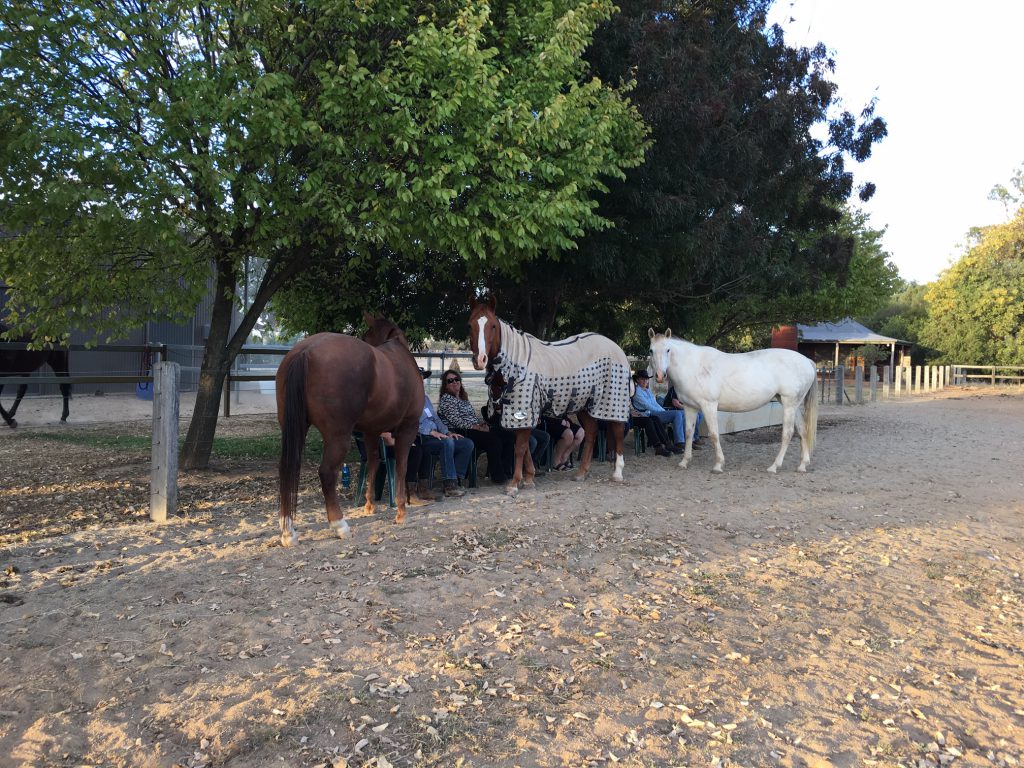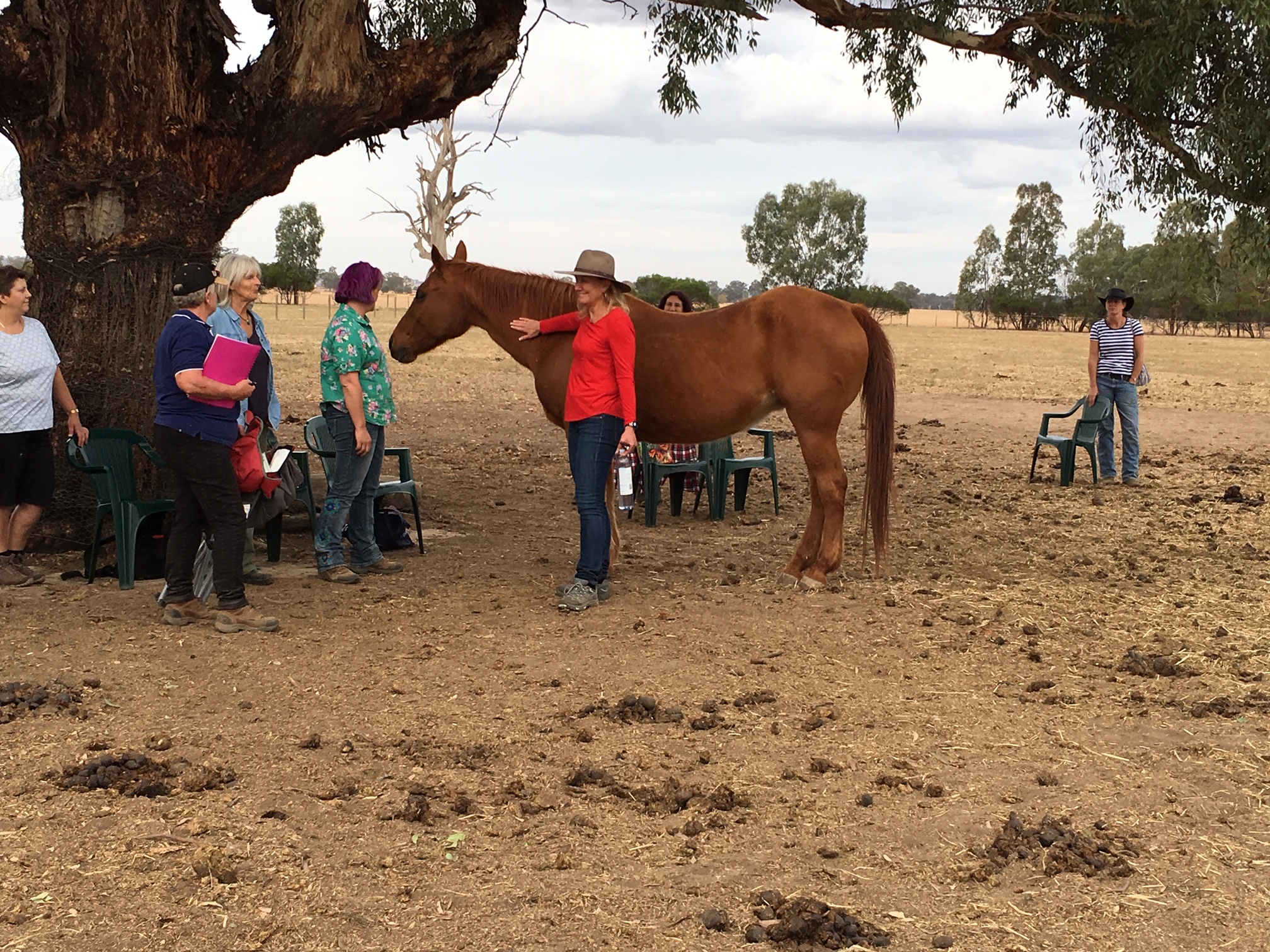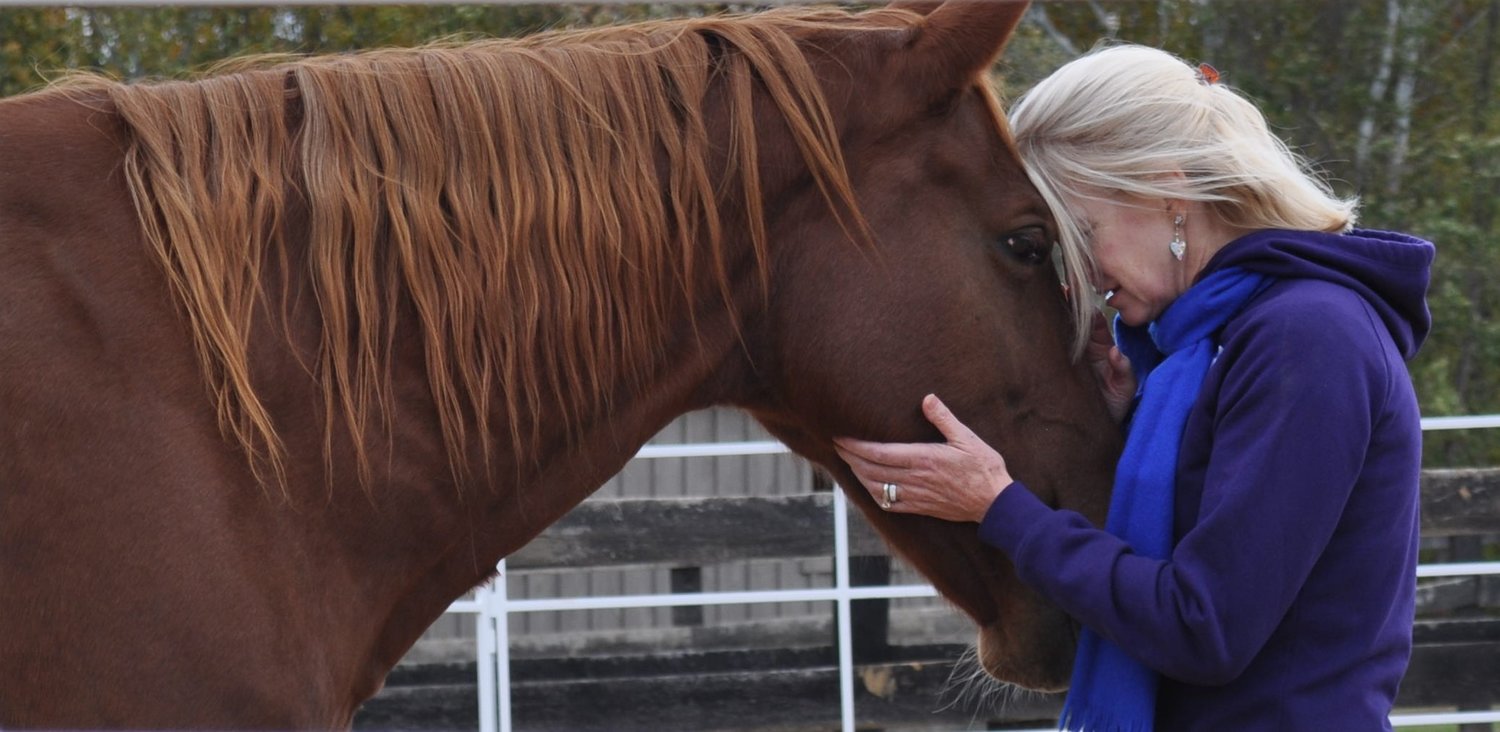
[vc_row][vc_column][vc_column_text]Ashlea Watson from VIC writes: I live on a property in rural Victoria, and I keep several horses. I would like to invite equine therapy groups to come to my property to use my land and horses for their healing sessions. How would I go about this?
Horses are wonderful healers, and helping people heal on the land can create transformational shifts. Horses are directly connected with the spirit realms, and they will connect with the people that need healing, support or a release during therapy sessions. Working in groups outside the paddock is safe for the groups that don’t have a lot of horse handling experience. If you wish to allow people to come into the paddocks to be with your horses one on one, then there will be some ground rules needed for your horse and for the people.
RESPECTING PERSONAL SPACE
Your horse must be able to respect a person’s personal space. Horses can be quite affectionate and curious creatures, but they are still a prey animal. Anything that may spook them can send them off running in another direction, and possibly right into your participants in the paddock. You can teach your horses to know boundaries by using a flag to wave them away or by using pressure to push them backwards and away from the participants. Participants with little horse experience may feel uncomfortable with a horse towering over them, even when the horse means no harm. If you are not there to correct your horses, it is essential to teach participants before they enter the paddock how to move the horse out of their space but you should make sure that there is an experienced facilitator always present. Here at Animal Talk we run similar sessions in our horse clinics at Banyandah in Albury. As the facilitator it is my responsibility to ensure the safety of everyone involved, therefore I have made it my business to know how to keep those boundaries with horses and how to safely move away any horses that are getting too close to participants. You want to create a loving and safe environment so they can focus on the program.

ALLOCATING A LEADER
The facilitator of these therapy groups must have some horse handling experience before they use your horses for therapy. They are responsible for ensuring that all people and horses respect each other when they are in the paddock with those horses. If you are not there to keep an eye out for your horses and the people, then you must run the facilitator through any rules and actions to take when things happen in the paddock. You need to feel this person will be competent enough to handle any situation that should arise. A horse will always follow a leader, so it is important that there is one present during these sessions.
STANDING STILL
Essentially, you can keep safety for everyone by haltering a horse and bringing them into a day yard or round yard for the therapy sessions. Training your horse to stand quietly on a halter is essential around people and throughout the horse’s life. Your horse is always going to be haltered at some point so training your horse to be comfortable to stand still on halter is crucial to making your facilities a success.
BEING TOUCHED
We humans love to touch and connect with animals. Even as we see them as the majestic beings that they are, we love to feel and connect with horses. This means your horses need to be used to being touched everywhere. They must be desensitised to more than one person touching them and giving them cuddles. And also your participants must understand where you can safely stroke a horse. Alert them to stay away from the rear of a horse, should they kick out for any reason. Stroking a horse’s neck and back are safe areas for people. Make them aware they can pat a horse’s head, but their head could swing around abruptly to swat a fly or move another horse out of the way and can cause quite an injury.

YIELDING TO PRESSURE
It is important that your horses respond to anyone who is trying to move them away. There are often people in these clinics that are very fearful of horses. Teaching your horse to yield to pressure applied to their hindquarters, their chest or shoulder is really important in facilitating these therapy sessions. Ideally, your horse should respond to anyone that will move them by gently pushing on their chest or shoulder backwards to get them turning away out of the group. Again, same for gently pushing their hindquarters to go out to the paddock when the sessions are finished. Basic groundwork training can help you to ensure your horses can respond to pressure implied by any person, no matter their experience. Getting horses to respond to moving away with words such as “back up“ can also be useful.
RESPECTING THE HORSE’S WISHES
As an animal whisperer, I can ask the horses I work with who wants to volunteer today to work with my students. When we are in the paddock together, the horses have the option to come up and interact with us or not. We do not force them to participate in any way. This is an important factor when working with horses. There will be times when one of your horses or all of them may not want to participate in that day’s activities. This is where consulting with an Animal Whisperer or learning how to communicate with your horses is crucial for these sessions to be successful. You can ask your horse herd why don’t they wish to participate in this session? How often should I allow groups to join you in the paddock? Who wants to participate and who doesn’t? By giving your horses the choice to work or not to work, you are acknowledging their wellbeing and they will be happier to work with you and help others. Of course they rarely do not want to participate and actively want to help people.

Horses bring transformation, understanding and love to many people. Their calm and healing nature attracts many people, and it is a privilege for myself to work with such wondrous beings. By ensuring both parties are acknowledged and respected you can have many successful healing sessions for people and your horses.[/vc_column_text][/vc_column][/vc_row]
